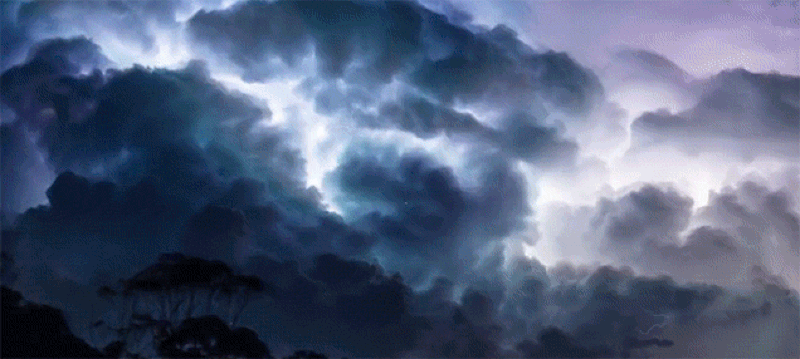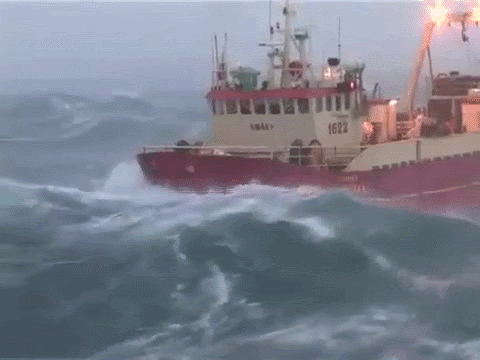

Cytokine Storm
by Kenneth Lyen
INTRODUCTION
When a virus invades you, it often causes minor symptoms like a fever, cough, loss of appetite, and a skin rash. Yes, a virus can kill. But it is usually not the virus itself that kills. It is your immune response to the virus that destroys you.
Let me use an analogy. The virus is like a thief that has come to rob you of your health. I don’t think it really wants to kill you. But you have an immune system defending your body, and your immune police force shoots antibody bullets at the robbers, as well as releasing chemicals to try stopping them. Sometimes the bullets and chemicals hit their target, but unfortunately, they might miss, and injure innocent bystanders, your normal healthy tissues. These get damaged accidentally by your overactive defence force. This overreaction is often referred to as a “cytokine release syndrome”, or a “cytokine storm”.
Triggers of this cytokine storm are usually, but not necessarily, viruses. We have already encountered Covid-19, dengue, flu, ebola, and other viruses that are all associated with a cytokine storm. Non-infective provocateurs setting off cytokine storms include graft-versus-host disease, multiple sclerosis, pancreatitis, or multiple organ dysfunction syndrome. It is our immune system’s response that wreaks havoc causing the terrible devastation, resulting in death.


COVID-19
The novel coronavirus, SARS-CoV-2, has become pandemic and affecting millions of people, killing hundreds of thousands worldwide. Most infected people are asymptomatic, but a small fraction develop moderate symptoms. An even smaller percentage have severe symptoms that can rapidly deteriorate necessitating intensive care, and some may pass away.
It is this severe group that develops a cytokine storm.


It is the severe group that develops the cytokine storm.
CYTOKINES
What are cytokines? They are small soluble protein and glycoprotein molecules whose role is to be a messenger for the immune system. A wide variety of cells, especially white blood cells, are capable of manufacturing cytokines. These include leucocyte (neutrophils, eosinophils, basophils), lymphocytes (B and T lymphocytes), monocytes, macrophages, mast cells, and dendritic cells.
Cytokines bind to cytokine receptors on the surface of a variety of cells., altering the activities of the cells by changing the function of their proteins, or by altering the expression of the genes. The half-life of cytokines are usually quite brief if they do not enter the bloodstream as they only have effects across short distances, but when they do enter the blood stream, the half-life is longer, and they can have effects further away.

There are four classes of cytokines:
1. Interleukins (IL)
There are 35 different interleukins and they are produced by leukocytes to act on other leukocytes. They can either be pro-inflammatory (IL-1a, IL-1b, IL6, IL 8), or anti-inflammatory (IL-4,IL10, IL-13). Interleukin 6 (IL-6) is the most important molecule involved in the cytokine storm. On the other hand, interleukin 10 (IL-10) suppresses the immune response, and causes “immunoparalysis”.
2. Tumour Necrosis Factor (TNF)
There are 19 different tumour necrosis factors, and they are produced by mast cells, macrophages, and T-lymphocytes. They are involved in immune cell activation, differentiation, growth and death. The most important TNF is tumour necrosis factor alpha (TNF-a) which is a pro-inflammatory cytokine. It activates cytotoxic T-lymphocytes following an infection, and is one of the lead players in the cytokine storm.
3. Interferons (INF)
There are 20 different interferons, and they can interfere with viral replication. They are subdivided into two main subtypes:
Type I Interferon: INF-a, and INF-b. They can be produced by many cells, not just immune cells, in response to infections.
Type II Interferon: INF-γ. They are involved in the immune response to infections, and can activate the phagocytosis of macrophages.
When activated by a viral infection, the interferon released influences its neighbouring cell to produce anti-viral proteins that can destroy viral RNA and inhibits protein synthesis.
4. Colony Stimulating Factors (CSF)
There are 4 types of colony stimulating factors:
Type 1: Monocyte or M-CSF stimulates the growth of monocytes
Type 2: Granulocyte-Macrophage or GM-CSF helps with the growth and differentiation of dendritic cells
Type 3: Granulocyte or G-CSF helps with the growth and development of neutrophils
Type 4: Erythropoietin
Colony Stimulating Factors act on stem cells in the bone marrow to stimulate growth and differentiation.
CYTOKINE STORM
A cytokine storm is an overly severe immune reaction in which the body uncontrollably releases too much pro-inflammatory cytokines, resulting in tissue damage.
Normally the immune system responds to a viral infection (like Covid-19) quite strongly at first, but over the course of time, the response decreases and eventually, when the virus is gone, it is resolved. During this early phase of the immune system’s cytokine response, it may be better to enhance our immune response with the hope that we can eliminate the virus, rather than suppress the immune process.
However, when the immune response is dysregulated, the immune response gets out of hand, and keeps on increasing inappropriately. This results in an unconstrained local and systemic inflammatory response, which can result in death. The inflammatory response involves interleukin 6 (IL-6), tumour necrosis factor alpha (TNF-a) as well as the release of many white blood cells.
What causes this unexpected cytokine storm is still not known.

SYMPTOMS AND SIGNS
Pro-inflammatory cytokines cause the blood vessels to be extremely permeable, and fluid leaks out into the interstitial spaces, causing swelling of the tissues. In the case of the lungs, when there is swelling of the space between the alveolae and the capillaries, there is a greater distance for oxygen to travel, and so the patient is deprived of oxygen, becomes breathless and may turn blue. The total blood volume also drops which results in low blood pressure, and therefore the heart has to pump harder.
Furthermore the cytokines send signals for more white cells to join the existing army of white cells to fight the virus. But there is an overestimation of the number of soldiers required, and the surplus jams up the lungs, worsening the supply of oxygen.
The poor blood flow to many other parts of the body can cause damage to numerous organs.
A cytokine storm can kill and is a medical emergency. A thorough clinical examination is made, and the oxygen saturation, heart rate, blood pressure, urine output, temperature, are closely monitored.

INVESTIGATIONS
Laboratory tests include a full blood count, C-reactive protein, renal and liver function, ferritin, D-Dimer, and the reverse transcription polymerase chain reaction for SARS-CoV-2.


TREATMENT
As there is no proven effective antiviral medication, treatment is largely supportive. We treat the fever, the cough, and other symptoms, and recommend bed rest. If the oxygen saturation is low, supplementary oxygen is given. Fluid balance is monitored and fluid lost is replaced.
There are several ongoing clinical trials using different drugs to try to rein in the runaway immune system. I will just list two of these drugs:

Tocilizumab
This is an interleukin 6 (IL-6) inhibitor that was used for the treatment of rheumatoid arthritis and juvenile idiopathic arthritis. It is now being tried out on Covid-19 patients. It dampens the inflammatory response, thereby subduing the cytokine storm of Covid-19. Preliminary results are encouraging.
Baricitinib
Originally used for the treatment of rheumatoid arthritis, this drug blocks the Janus kinase enzyme which in turn modulates or dampens the gene expression of immunological cells. It too is showing slight promise.
Steroids: Dexamethasone, Hydrocortisone, Methylprednisolone
Steroids, like dexamethasone has been found to be effective for severe Covid-19 cases, reducing the risk of death in ventilated cases by about 36%. Hydrocortisone reduced deaths by 31%. A small trial with methylprednisolone, which also suppresses the immune response, only reduced the deaths by 9%.
Remdesivir
The antiviral drug remdesivir needs to be given early in Covid-19 cases for it to be beneficial. However, it does not appear to be very effective when used during the cytokine storm.
MESSAGE TO HEALTHCARE WORKERS
When you are in the eye of a storm, you need hang on there. Be courageous and don't give up. You are battling this molecular maelstrom, a rather cunning monstrosity, so please keep your wits about you. The cytokine storm is trying to plunge your Covid-19 patient into the abyss, but I know that you will remain strong. You are not alone: all of us will help in one way or another. There is always hope. We thank you for your care and dedication!
Kenneth Lyen
1 June 2020, Updated 5 December 2020
%20a.jpg)

POSTSCRIPT 1: MULTISYSTEM INFLAMMATORY SYNDROME OF CHILDREN (MIS-C)
Recently, young people under the age of 21 years have developed a rare severe condition characterised by high fever, skin rash, red eyes, swelling of the hands and feet, abdominal pain, diarrhoea, confusion, drowsiness, involvement of the kidneys or the heart. Some of these symptoms, like red or cracked lips, red eyes, strawberry tongue, are suggestive of Kawasaki Disease.
The World Health Organisation has named this inflammatory condition, involving many body systems, the "Multisystem Inflammatory Syndrome of Children (MIS-C)". This is a rapidly developing area, and our understanding is growing day by day. Watch out for updates!
POSTSCRIPT 2: BRADYKININ STORM
With COVID-19, a new hypothesis to explain the different manifestations of this disease, including the "storm" has been suggested (see references below).
REFERENCES
Pathogenesis and treatment of cytokine storm in Covid-19
https://www.ncbi.nlm.nih.gov/pmc/articles/PMC7194613/
Tocilizumab for Covid-19
Baricitinin for Covid-19
https://www.thelancet.com/action/showPdf?pii=S1473-3099%2820%2930270-X
Association Between Administration of Systemic Corticosteroids and Mortality Among Critically Ill Patients With COVID-19A Meta-analysis
https://jamanetwork.com/journals/jama/fullarticle/2770279
WHO Corticosteroids for Covid-19
https://www.who.int/publications/i/item/WHO-2019-nCoV-Corticosteroids-2020.1
Covid Storm talk by Ken Lyen
https://www.youtube.com/watch?v=RA2FUVU-fY0
Bradykinin Storm
MR Garvin, C Alvarez, JI Miller, et al: A mechanistic model and therapeutic interventions for COVID-19 involving a RAS-mediated bradykinin storm. https://elifesciences.org/articles/59177
Thomas Smith: A Supercomputer Analyzed Covid-19 — and an Interesting New Theory Has Emerged
A closer look at the Bradykinin hypothesis. https://elemental.medium.com/a-supercomputer-analyzed-covid-19-and-an-interesting-new-theory-has-emerged-31cb8eba9d63
